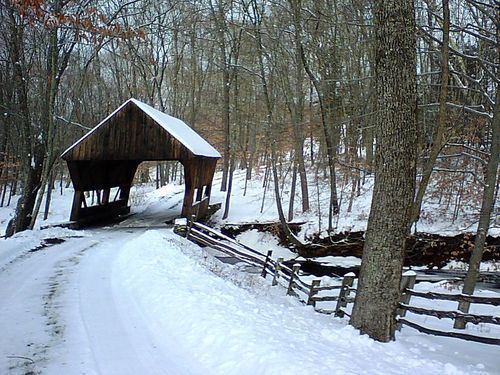NECTA Norwich-New London Time zone EST (UTC-5) Zip code 06331 Local time Wednesday 6:33 AM | State Connecticut Incorporated 1703 Elevation 107 m Population 5,132 (2010) | |
 | ||
Region Northeastern Connecticut Weather 10°C, Wind S at 16 km/h, 93% Humidity | ||
Canterbury is a town in Windham County, Connecticut, United States. The population was 5,234 at the 2010 census.
Contents
- Map of Canterbury CT 06331 USA
- History
- Geography
- Demographics
- Museums and other points of interest
- Government
- Education
- Notable people
- References
Map of Canterbury, CT 06331, USA
History
The area was first settled in the 1680s as Peagscomsuck, consisting mainly of land north of Norwich, south of New Roxbury, Massachusetts (now Woodstock, Connecticut) and west of the Quinebaug River, Peagscomsuck Island and the Plainfield Settlement. In 1703 it was officially separated from Plainfield and named The Town of Canterbury.
In 1832, Prudence Crandall, a schoolteacher raised as a Quaker, stirred controversy when she opened a school for black girls in town. The Connecticut General Assembly passed the "Black Law" which prohibited the education of black children from out of state, but Crandall persisted in teaching, and was briefly jailed in 1832. Mobs forced the closure of the school in 1834, and Crandall married the Reverend Calvin Philco that same year and moved to Illinois. Connecticut repealed the Black Law in 1838, and later recognized Crandall with a small pension in 1886, four years before her death. In 1995, the Connecticut General Assembly designated Prudence Crandall as the state's official heroine because she opened the first Academy for young black women. The school still stands in Canterbury, and currently serves as the Prudence Crandall Museum and is a National Historic Landmark. In 2009 a life-size bronze statue of Prudence Crandall with one of her African American students was installed in the state capital.
Geography
According to the United States Census Bureau, the town has a total area of 40.2 square miles (104 km2), of which, 39.9 square miles (103 km2) of it is land and 0.2 square miles (0.52 km2) of it (0.62%) is water.
Demographics
As of the census of 2000, there were 4,692 people, 1,717 households, and 1,339 families residing in the town. The population density was 117.6 people per square mile (45.4/km²). There were 1,762 housing units at an average density of 44.2 per square mile (17.1/km²). The racial makeup of the town was 97.34% White, 0.36% African American, 0.28% Native American, 0.26% Asian, 0.02% Pacific Islander, 0.30% from other races, and 1.45% from two or more races. Hispanic or Latino of any race were 1.07% of the population.
There were 1,717 households out of which 37.2% had children under the age of 18 living with them, 65.5% were married couples living together, 8.1% had a female householder with no husband present, and 22.0% were non-families. 16.7% of all households were made up of individuals and 6.6% had someone living alone who was 65 years of age or older. The average household size was 2.73 and the average family size was 3.06.
In the town, the population was spread out with 25.7% under the age of 18, 7.3% from 18 to 24, 31.4% from 25 to 44, 26.3% from 45 to 64, and 9.3% who were 65 years of age or older. The median age was 38 years. For every 100 females there were 103.3 males. For every 100 females age 18 and over, there were 97.9 males.
The median income for a household in the town was $55,547, and the median income for a family was $65,095. Males had a median income of $41,521 versus $28,672 for females. The per capita income for the town was $22,317. About 3.5% of families and 4.5% of the population were below the poverty line, including 4.2% of those under age 18 and 10.0% of those age 65 or over.
Museums and other points of interest
Government
Canterbury's new administration was elected in November 2015. They will serve through November 2016. Roy Piper is First Selectman, and Second Selectman is Christopher J. Lippke. Both are Republicans. Third Selectman is seated as a Democrat, Lee Wrigley. Natalie Ruth Riemann, was elected to serve as Town Clerk and Tax Collector of Canterbury CT, Patricia Faries is the Republican elected Town Treasurer.
Education
Students from grades Kindergarten through 8 are zoned to the Canterbury School District. The district has two schools:
The local elementary school for kindergarten through fourth grades is Canterbury Elementary School, whose mascot is the Kitt Fox. The local middle school for fifth through eighth grades is Dr. Helen Baldwin Middle School, whose mascot is the bulldog.
As Canterbury has no high school of its own, Canterbury students have the option of attending H.H. Ellis Technical High School, Norwich Technical High School, Windham Vocational-Technical High School, Woodstock Academy, Norwich Free Academy, or Griswold Senior High School.
